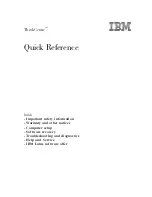
153
Appendix A. Revision History
Revision 1.00
Chris Curran
Converted to the Red Hat standard
Revision 1.01
Chris Curran
Legal Notice Page: Clarification of Copyright Statement. Red Hat owns the copyright to this and
all other subsequent derivative works. Werner Puschitz retains the copyright to the original at
www.puschitz.com.
Chapter 2, 32 bit Architecture: Added “In Red Hat Enterprise Linux 5, a 32 bit kernel is always a
hugemem kernel so there is no need to install a special kernel.”
Chapter 4, The I/O Scheduler: Added “Red Hat Enterprise Linux 5 in fact allows users to change I/O
schedulers dynamically (ie echo sched_name > /sys/block/<sdx>/queue/scheduler)”
Chapter 5, Tuning the Page Cache: Added “For Red Hat Enterprise Linux4/5, the pagecache is
dynamically adjusted. You can adjust the minimum free pages using; # echo 1024 > /proc/sys/
vm/min_free_kbytes Again to make the change permanent,add the following line to the file /etc/
sysctl.conf; # echo vm.min_free_kbytes=1024 >> /etc/sysctl.conf Additional tuning can be done to
start reclaiming pagecache pages by adjusting the swappiness percentage as described in the next
section.”
Chapter 12: Changed title to “Enabling Asynchronous I/O and Direct I/O Support
Chapter 12, Enabling Asynchronous I/O in Oracle 9i and 10g: Added “If you use file systems
instead of raw devices or ASM for data files, then you need to ensure that the datafiles reside on
file systems that support asynchronous I/O (e.g., OCFS/OCFS2, ext2, ext3). To do async I/O on file
systems the filesystemio_options parameter needs to be set to "asynch". Eliminated all references
to disk_asynch_io=true Added “For Red Hat Enterprise Linux 3, it is recommended you use direct
I/O ONLY for ext2, ext3, GFS, NFS and OCFS file systems. For Red Hat Enterprise Linux 4/5, it is
strongly recommended to “setall” for ext2, ext3, GFS, NFS and OCFS file systems.”
Chapter 14: Added Note “As explained in detail in this section, enabling big pages helps reduce TLB
misses. However, this performance benefit is realized primarily when using large SGA sizes. Once a
portion of memory is locked down for big pages, applications that use normal pages cannot access
that portion of the memory. It is very important to make sure that there is enough memory for normal
pages for applications and users to avoid excessive swapping. So, it is recommended that big pages
be used only on systems that have large amounts of physical memory and for SGA sizes of 16GB or
greater.”
Chapter 18: Deleted chapter on Oracle's Orion performance prediction tool
Revision 1.1
November 2007
Chris Curran
Added Part II - Installing the Oracle Database 10g on Red Hat Enterprise Linux
Added Part III - Installing the Oracle9i 32 bit Database on Red Hat Enterprise Linux
Revision 1.4
September 2008
Chris Curran
Updated to the latest version of publican and pushed to brew.
Содержание CLUSTER SUITE FOR ENTERPRISE LINUX 5.1
Страница 7: ...Part I Tuning and Optimizing Red Hat Enterprise Linux for Oracle Database 9i and 10g ...
Страница 8: ......
Страница 10: ...4 ...
Страница 16: ...10 ...
Страница 28: ...22 ...
Страница 30: ...24 ...
Страница 36: ...30 ...
Страница 42: ...36 ...
Страница 54: ...48 ...
Страница 60: ...54 ...
Страница 68: ...62 ...
Страница 72: ...66 ...
Страница 88: ...82 ...
Страница 90: ...84 ...
Страница 92: ...86 ...
Страница 94: ...88 ...
Страница 98: ...92 ...
Страница 108: ...102 ...
Страница 112: ...106 ...
Страница 120: ...114 ...
Страница 122: ......
Страница 128: ...122 ...
Страница 132: ...126 ...
Страница 134: ...128 ...
Страница 142: ...136 ...
Страница 146: ...140 ...
Страница 156: ...150 ...
Страница 160: ...154 ...


































